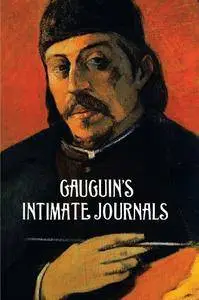Gauguin's Intimate Journals (Dover Fine Art, History of Art) by Paul Gauguin
2011 | ISBN: 0486294412 | English | 160 pages | EPUB | 9 MB
2011 | ISBN: 0486294412 | English | 160 pages | EPUB | 9 MB
"These journals are an illuminating self-portrait of a unique personality.…They bring sharply into focus for me his goodness, his humor, his insurgent spirit, his clarity of vision, his inordinate hatred of hypocrisy and sham." — Emil Gauguin, the artist's son, in the Preface.
One of the great innovative figures in modern art, Gauguin was a complex, driven individual who, in 1883, gave up his job as a stockbroker in order to be free to paint every day. As time passed, he determined to sacrifice everything for his artistic vocation. Finally, in pursuit of a place to paint "natural men and women living lives unstained by the sham and hypocrisy of civilization, he took up residence in the South Seas, first in Tahiti and, later, in the Marquesas Islands.
Completed during the artist's final sojourn in the Marquesas, these revealing journals — reprinted from rare limited edition — throw much light on the painter's inner life and his thoughts about a great many topics. We learn of Gauguin's first stay in Paris in 1876, and his initial encounter with Impressionism, his tumultuous relationship with van Gogh when they lived and painted together in Arles, his pithy evaluations of Degas, Cèzanne, Manet, and other artists; his opinion of art dealers and critics (poor), and much more. Also here are illuminating glimpses of Gauguin's life in the islands: his delight in the simple, carefree lives of the natives and the physical charms of Polynesian women, counterbalanced by his struggles with poverty, hatred of the missionaries, and despair over the failures of French colonial justice.
Witty, wide-ranging, and aphoristic, these writings are not only entertaining in themselves, they are crucial for anyone seeking to understand Gauguin and his work. The text is enhanced with 27 full-page illustrations by Gauguin.



